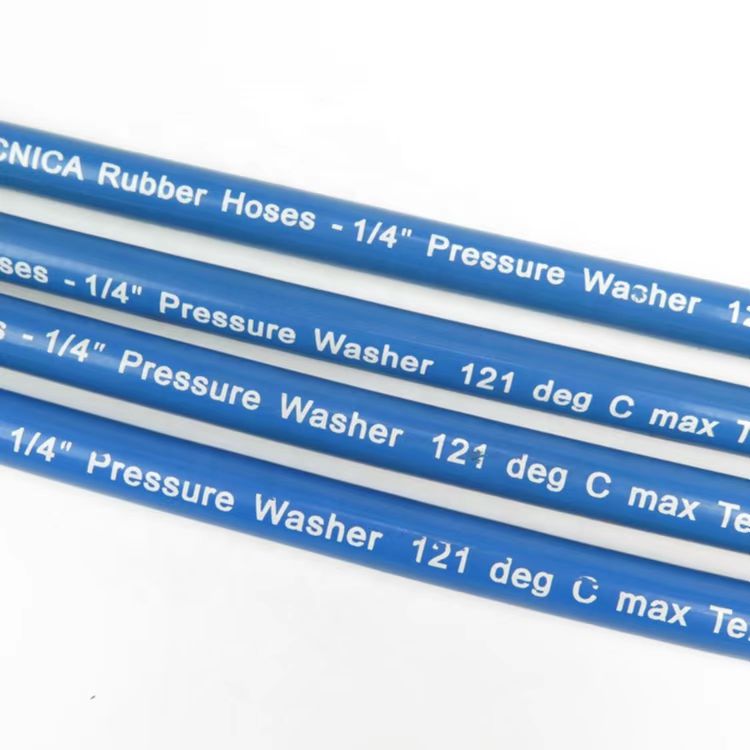335345435
Aug . 19, 2024 05:01 Back to list
Exploring EN854 1TE Key Features and Applications in Industrial Settings
Understanding EN 854 1TE A Key Standard in Hose Manufacturing
The EN 854 1TE standard plays a crucial role in the manufacturing of hydraulic hoses, specifically designed for applications that require flexibility and the capability to withstand high pressure. This European standard provides a systematic framework for the specifications of textile-reinforced rubber hoses, primarily used in hydraulic systems. Understanding the nuances of EN 854 1TE is essential for manufacturers, engineers, and end-users alike to ensure safety, performance, and reliability in various industrial applications.
What is EN 854 1TE?
EN 854 1TE is a standard specified by the European Committee for Standardization (CEN). It outlines the requirements for the construction, dimensions, and performance of textile-reinforced hydraulic hoses. The 1TE designation refers to a specific type of hose characterized by its construction of one layer of textile reinforcement. This standard is primarily applicable for hoses that operate under moderate pressure conditions, making them suitable for a wide range of hydraulic applications, including those in agriculture, construction, and industrial machinery.
Construction and Materials
Hoses manufactured under the EN 854 1TE standard are typically constructed from high-quality synthetic rubber compounds. They feature a textile reinforcing layer, which provides added strength and flexibility. The textile reinforcement helps the hose withstand the internal pressures and reduces the risk of collapse, ensuring a consistent flow of fluid. Common materials used in the production of these hoses include nitrile rubber, which is known for its excellent resistance to oils and various fluids, ensuring durability even under challenging conditions.
Performance Criteria
The EN 854 1TE standard sets specific performance criteria that hoses must meet to guarantee their operational efficiency and safety. Key performance indicators include
en854 1te

1. Pressure Rating The standard specifies maximum working pressures, which are critical for ensuring that hoses can handle the pressures encountered in hydraulic systems without failure.
2. Temperature Range The hoses must operate effectively across a specified temperature range. This ensures that the hose maintains its integrity under varying environmental conditions.
3. Abrasion Resistance Given the industrial environments in which these hoses are used, abrasion resistance is critical. The standard outlines testing requirements to ensure that the hose can withstand wear from external factors.
4. Fluid Compatibility Hoses must be compatible with a variety of hydraulic fluids. The EN 854 1TE standard provides guidelines on the types of fluids that the hoses can safely transport without degrading.
Importance of Compliance
Adherence to the EN 854 1TE standard is paramount for manufacturers. Compliance ensures that the hoses meet safety and quality benchmarks, reducing the risk of catastrophic failures that can result in costly downtime, injuries, or environmental hazards. For end-users, utilizing hoses that conform to this standard provides peace of mind regarding performance and longevity.
Conclusion
In conclusion, the EN 854 1TE standard is a vital component of hose manufacturing in the hydraulic industry. Its stringent guidelines on construction, performance, and material properties ensure that hoses can operate effectively in demanding environments. For manufacturers, adherence to this standard not only guarantees product quality but also fosters a reputation for reliability in the market. As industries continue to evolve and demand higher performance from their equipment, the importance of standards like EN 854 1TE cannot be overstated—it is an essential foundation that aids in the development of safe, efficient, and robust hydraulic systems.
-
SAE 100 R17 Black Smooth Cover Hydraulic Hose
NewsMar.07,2025
-
SAE 100 R17 Black Smooth Cover Hydraulic Hose
NewsMar.07,2025
-
SAE 100 R17 Black Smooth Cover Hydraulic Hose
NewsMar.07,2025
-
SAE 100 R17 Black Smooth Cover Hydraulic Hose
NewsMar.07,2025
-
SAE 100 R17 Black Smooth Cover Hydraulic Hose
NewsMar.07,2025
-
steel wire braided hydraulic hose
NewsMar.07,2025



